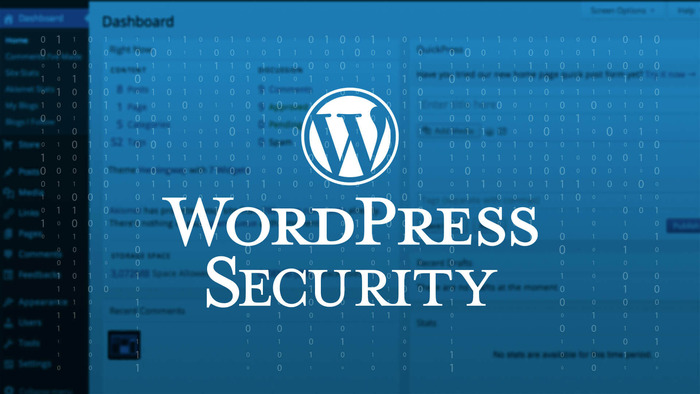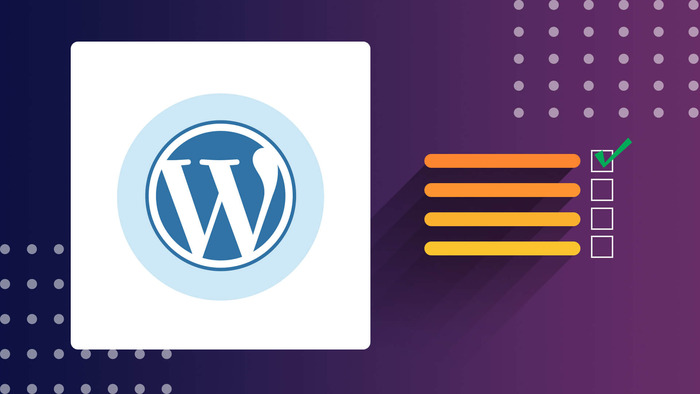WordPress website owners have heightened concerns about website security. Cyber attack threats loom as hackers devise new methods to exploit vulnerabilities and compromise valuable data. 94% go after WordPress websites, and 58% of hackers target small businesses instead of big ones. Safeguarding your website has never been more crucial.
This article will provide a comprehensive WordPress security checklist. It features essential steps to secure your website. We’ll dive into best practices, empowering you to avoid potential threats. At the end of this article, you’ll learn how to enhance the security of your WordPress website.
Strengthening Passwords
A strong password protects your website from unauthorized access. Weak passwords make it easy for hackers to breach your security. A firewall service protected WordPress websites by blocking 18.5 billion password attack requests in the first half of 2021.

Tips for Creating Secure Passwords
Here are some valuable tips to assist you in creating robust passwords:
- Length and Complexity. Aim for a minimum of 12 characters. The longer and more complex it is, the harder it is to crack. Consider using a combination of letters, numbers, and special characters.
- Avoid Common Words. Don’t use words found in dictionaries or personal information like names or dates.
- Unique Passwords. Using the same password for multiple accounts heightens the risk of compromise if a hacker breaches one account.
- Regular Updates. Consider changing passwords every few months or after any security incidents.
- Use a password manager. A password manager helps generate, store, and automatically fill in your passwords. It uses strong encryption to protect your passwords, reducing the risk of unauthorized access.
Keeping Plugins and Themes Up to Date
Outdated plugins and themes are prime targets for hackers looking to exploit security flaws and gain unauthorized access. Developers release updates to fix these issues and improve performance. Ignoring updates leaves your website vulnerable to potential attacks.
Best Practices for Updating Plugins and Themes
Follow these best practices to ensure you stay on top of plugin and theme updates:
- Check for Updates. Review your installed plugins and themes for available updates.
- Update Promptly. Delaying updates exposes your website to security risks.
- Test Compatibility. Ensure new plugins and theme versions work well with your current WordPress setup.
- Remove Unused Plugins and Themes. It reduces the risk of attacks and simplifies the update process.
- Enable Automatic Updates. But be cautious and only use it for reliable and regularly updated extensions.
Enabling Two-Factor Authentication (2FA)
2FA provides an extra layer of security beyond usernames and passwords. It reduces the risk of unauthorized access by requiring two authentication factors. Standard 2FA methods for WordPress include:
- SMS or Email Codes
- Time-Based One-Time Passwords (TOTP)
- Hardware Security Keys
- Biometric Authentication
Choosing a Secure Hosting Provider
DDoS attacks surged by 40% in Q2 2021 compared to last year. Picking a secure hosting provider is vital for protecting your WordPress website. They play a crucial role in defending against threats. Reliable and secure hosting services offer advantages over generic options.
Key Features of Secure Hosting
Consider these important features when choosing a secure hosting service:
- Strong Security Measures: Look for providers with firewalls, malware scanning, and DDoS protection to guard against cyber threats.
- Secure Data Centers: Ensure the provider has secure data centers with restricted access and backup power systems to protect your data.
- SSL/TLS Certificates: Check if they offer free SSL/TLS certificates for encrypted data transmission.
- Server Updates and Maintenance: Reputable providers regularly update and maintain servers to minimize vulnerabilities.
- Backup Solutions: Choose hosting services with reliable backup options to recover data in emergencies.
- Responsive Support: Assess their technical support for quick assistance during security-related issues.
Performing Regular Backups
Regular backups are a safety net, allowing you to restore your website if anything goes wrong, like data loss or hacking. Backups provide peace of mind, assuring website data recovery in unforeseen circumstances.
Best Practices for Regular Backups
Follow these tips for adequate backups:
- Automated Backup Solutions: It ensures consistent backups without manual effort.
- Backup Frequency: For active sites, daily backups are recommended. Less active sites may need weekly backups.
- Off-Site Storage: Store backups in separate locations or servers to safeguard against server failures or security breaches.
- Incremental Backups: Consider using incremental backups that only save changes since the last backup. It speeds up the process and reduces backup size.
- Test Restorations: Periodically test restoring your backups to ensure they work properly when needed.

Monitoring for Suspicious Activity
Keeping an eye on your website for suspicious activity is crucial for staying ahead of security threats. Hackers are always evolving; therefore, proactively detecting unauthorized access or malicious behavior is essential.
Focus on these key areas when monitoring your website for suspicious activity:
- Login Attempts
- File Changes
- Malware Detection
- User Activity Logs
- Traffic and IP Monitoring
Implementing Website Monitoring Tools and Services
To monitor your website for suspicious activity, consider these options:
- Security Plugins: Install reputable security plugins with firewall protection, malware scanning, and activity logging.
- Website Monitoring Services: These services provide timely alerts and reports.
- Security Information and Event Management (SIEM) Systems: SIEM systems centralize log data for proactive threat detection and analysis.
- Web Application Firewalls (WAF): Strengthen your defenses with a WAF that filters out malicious traffic and blocks known attack patterns.
Securing your WordPress website is essential for protecting your online presence and keeping your visitors’ trust. By implementing these measures, you can defend against attacks, reduce the risk of breaches, and provide a safe browsing experience. Remember, security is an ongoing commitment. Prioritize it to safeguard your website and maintain its integrity.
